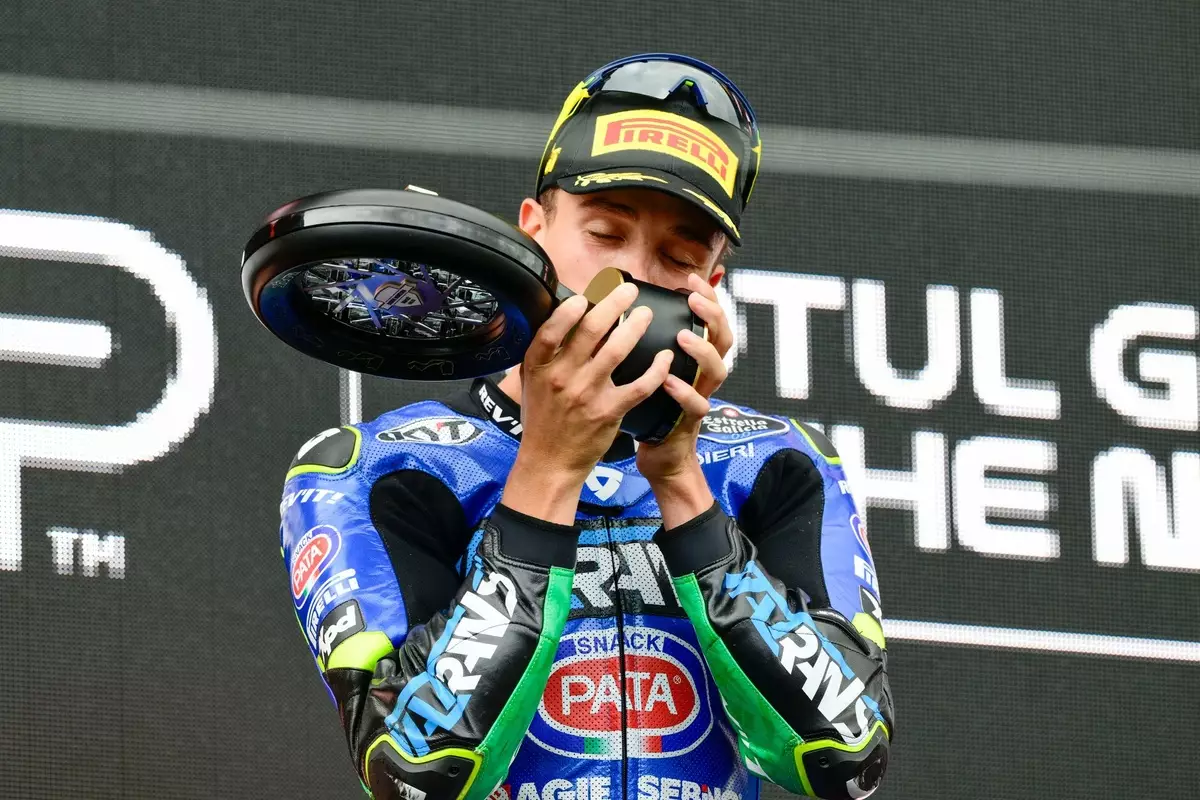Diogo Moreira’s recent victory at Assen marks more than just a race win; it signals a seismic shift in the landscape of motorcycle racing. At just 21 years old, the Sao Paulo native has transcended the boundaries of Moto2, showcasing not only raw speed but strategic maturity that hints at a promising transition to MotoGP. His dominant performance—qualifying on pole, controlling the race, and becoming the first Brazilian to triumph in Moto2—serves as a clear indicator that he possesses the talent and mindset necessary for the highest echelon of motorcycle racing.
What sets Moreira apart is the combination of undeniable pace and an evolving racecraft, which came into focus following a somewhat inconsistent start to his season. His uptick in form, accruing more points in recent races than his competitors, signals a rider on an upward trajectory rather than a fleeting moment of brilliance. This shift underscores his potential to not only compete but to thrive in the fierce competitive arena of MotoGP, provided he seizes the right opportunity.
The Strategic Chessboard of Motorcycle Racing
Behind Moreira’s rising star lies a complex web of negotiations, team dynamics, and strategic positioning. The looming possibility of him joining Pramac Yamaha, possibly alongside Toprak Razgatlioglu, illustrates how well-placed he might be within the grand chessboard. This move would inevitably force current Pramac riders Miguel Oliveira and Jack Miller to seek new teams, reshaping the lineup and opening new doors for Moreira.
Yamaha’s recent efforts, including a test on the Yamaha R1 at the Balaton circuit and a partnership with Yamaha Brazil, underscore the manufacturer’s interest in tapping into the South American market—the birthplace of Moreira. This strategic alignment not only benefits the rider but aligns with Yamaha’s global expansion goals. The potential pairing with Razgatlioglu could turn Pramac into a developmental team for Yamaha, mirroring their initial ambitions for a “junior team” concept favored in the early days of their MotoGP involvement.
For Moreira, the decision to stay in Moto2 for another year in a dedicated team, possibly Pramac’s Moto2 squad, might reflect comfort and confidence in his current setup while he matures further. His focus appears unwavering on maximizing performance rather than rushing into a premier class that might prematurely stifle his potential if not managed carefully. This patience, coupled with strategic negotiations, suggests a rider who understands that timing and environment are as crucial as raw talent.
Navigating an Uncertain Future
The possible options for Moreira’s future are multifaceted and reflective of the broader turbulence within MotoGP’s rider market. Aprilia’s interest in placing him with Trackhouse hints at a long-term vision, while Honda’s indecision plays into the overall chaos and strategic subtlety shaping the rider landscape. Moreira’s rejection of opportunities like the post-Aragon test with Aprilia indicates a calculated approach—he’s weighing more than just the immediate step, but the development pathway that will define his career.
What becomes evident is that Moreira is more than a promising talent; he’s emerging as a pivotal figure in this next wave of MotoGP rookies. His ascent not only challenges the traditional pathways but also signals a shifting landscape where emerging riders from diverse backgrounds—like Brazil—can break through old narratives and rewrite the sport’s future.
His story is a testament to the importance of timing, adaptability, and strategic thinking—elements that will determine whether Moreira’s current momentum elevates him to stardom or merely remains a highlights reel in a career still in its infancy. If he skillfully navigates the political intricacies of team contracts, manufacturer interests, and personal development, he may not only earn a slot on the grid but redefine what it means to be a young talent in modern MotoGP.

